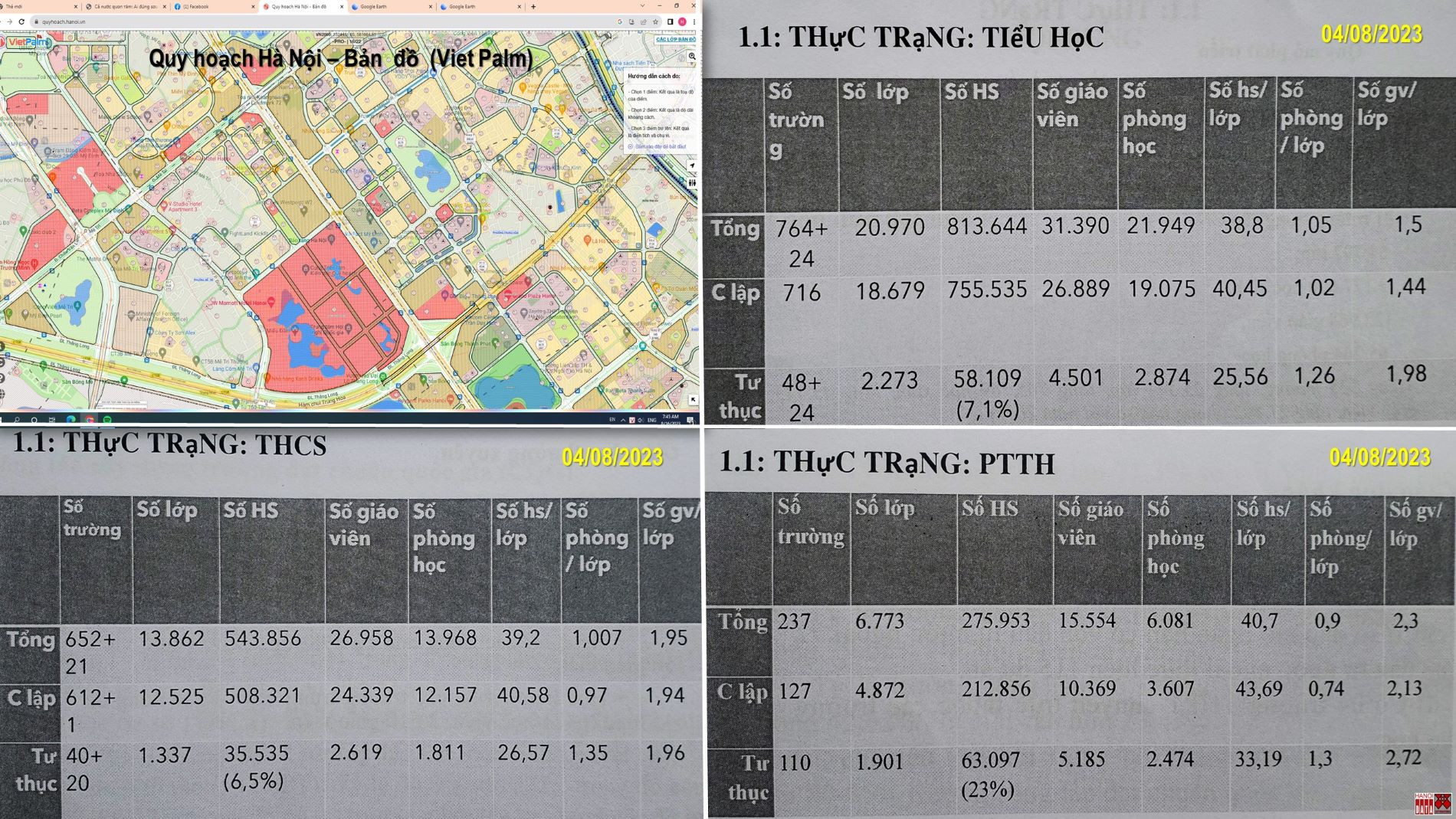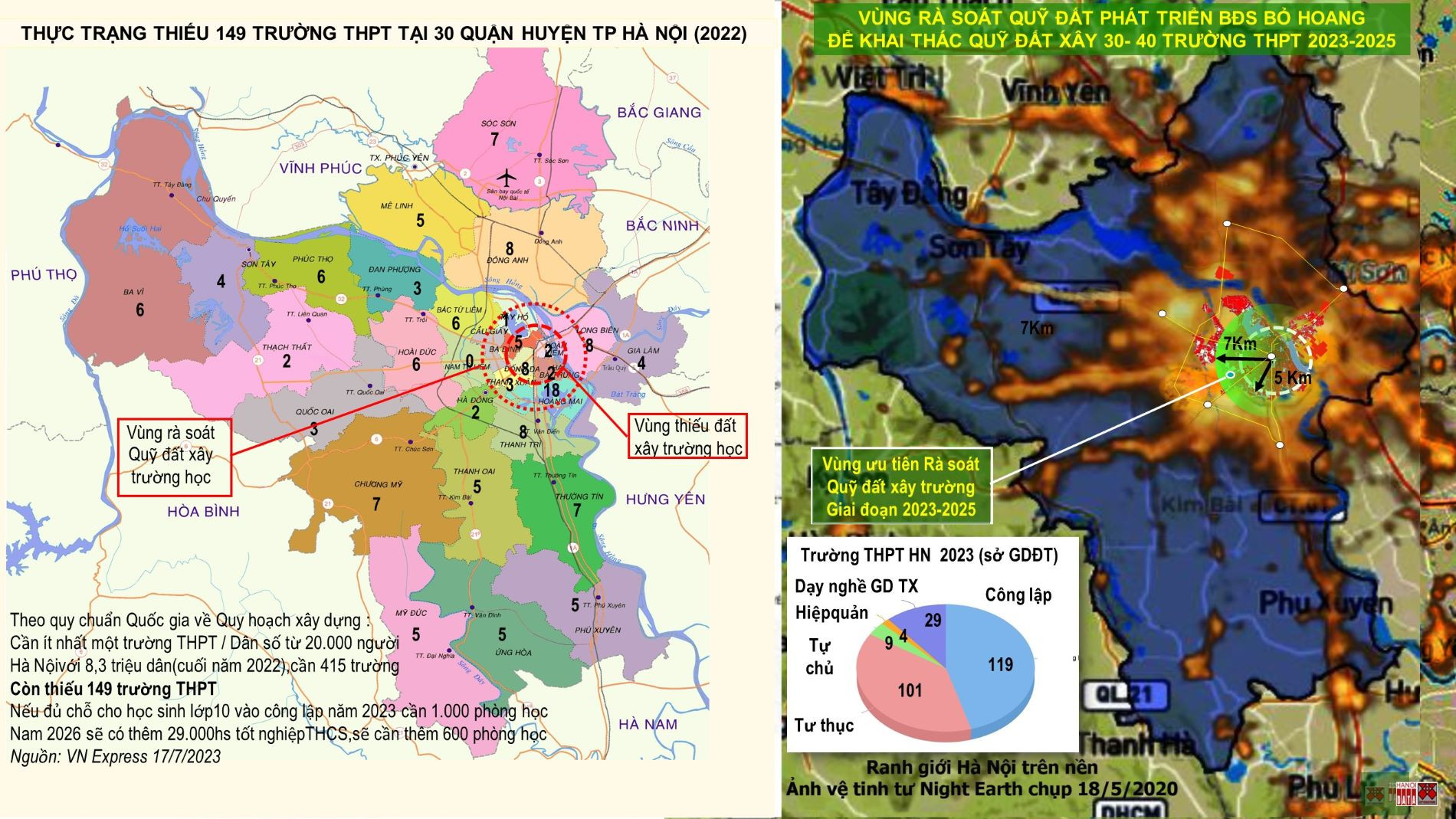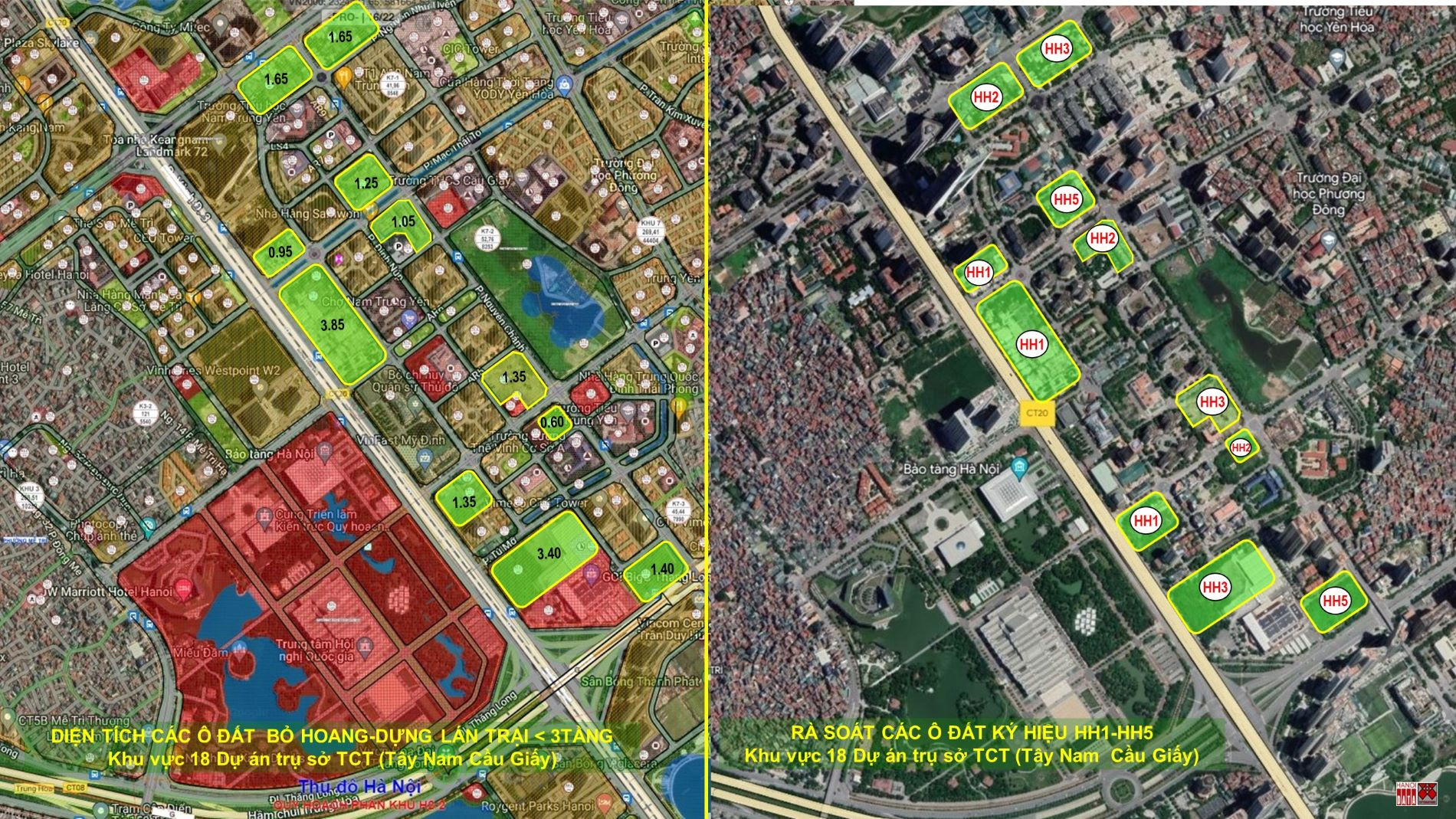In recent years, the highest rate of students passing the 10th grade public school entrance exam in Hanoi is just over 60%. A public school seat in the heart of the capital has become a "hot race" that makes many parents and students feel like they are "sitting on hot coals". This reality has existed for many years because the public school system in Hanoi has not met the demand. VietNamNet has produced a series of articles on the current situation and solutions to this problem in the context of abolishing the district level, merging wards and communes, and arranging redundant headquarters.
After the article on the current situation of nearly 30,000 Hanoi students not having places to enter public 10th grade, and analyzing the reasons why the number of students is increasing but few more public schools in Hanoi are being opened, VietNamNet received many comments and opinions of interest from experts and readers.
The following article is the perspective of Mr. Tran Huy Anh, Standing Member of the Hanoi Architects Association, on this issue.
Lack of land to build schools right from the Hanoi School Network Planning
On May 23, 2002, Hanoi established the Department of Planning and Architecture on the basis of reorganizing the Office of the Chief Architect, with the task of advising the City People's Committee on State management of planning and architecture. The first director was Mr. Dao Ngoc Nghiem. Immediately after its establishment, the Department announced land use planning for 14 districts.
In 2003, the Institute of Construction Planning - Department of Architectural Planning established and submitted the "Planning for the school network in Hanoi Capital until 2010 and orientation to 2020", which was approved by the City People's Committee. The planning was based on the current population being too low, so it proposed a lack of land for school construction... Therefore, the surplus land was not used to build schools, but was given to organizations and individuals to exploit real estate indiscriminately. There were dozens, hundreds of projects left unused for decades. Many urban areas only focused on building houses for sale, not schools, so Hanoi lacked hundreds of schools and thousands of classrooms.

A survey in Cau Giay district after 5 years of implementing the "School Network Planning" showed that: The district has an area of over 1,200 hectares, the population in 1997 was 90,000, up to 140,000 in 2001. This planning document cites the current population (2003) as still 90,000, the number of students in 4 levels is nearly 20,000; it is forecasted that by 2020 there will be nearly 150,000 people with more than 40,000 students. From that number of students, planning nearly 60 hectares of land to build schools is already redundant, the rest is free to build divided houses, high-rise buildings, commercial centers, hotels, restaurants...
In fact, in 2008, the population of Cau Giay district was over 200,000, with nearly 50,000 students in all four levels. In less than half of the time, the planned land fund for the next ten years had been built up but there was still a shortage of dozens of hectares. By 2020, the land area needed to build schools would have doubled. The land fund reserved for building schools had long been exhausted, while more than 20 hectares of land along Ring Road 3 had been allocated for headquarters of corporations. After more than 20 years (2003-2025), most of this land was still left vacant.
Not only Cau Giay district has the problem of lacking schools because there is no more land to build schools due to the incomprehensible low population forecast, other districts do as well.
Planning with outdated tools will cause the capital to continue to lack land to build schools.
After Hanoi expanded its administrative boundaries and established the Master Plan for the Capital Construction, announced in 2011 (abbreviated as QH 1259), the current situation of land shortage for school construction has not improved: Many remote districts still lack land from preschool to high school... However, this information is not fully reflected in the 10-year assessment report on the implementation of Plan 1259 (2011-2021).
During the process of developing the Capital Planning, on August 4, 2023, the Hanoi Department of Education and Training coordinated with the Hanoi Institute for Socio -Economic Development Research to organize a seminar to collect opinions on the development plan of education and principles and methods of integration into the Hanoi Capital Planning for the period 2012-2030, with a vision to 2050.

When chairing this discussion, the then Vice Chairman of the Hanoi People's Committee, Mr. Ha Minh Hai, emphasized: The assessment of the current status of the capital's education sector must be honest, straightforward, objective, scientific and creative. All data must be updated to 2022 and compared with the capital of a country with a similar education system to set goals and develop an implementation plan. The proposed development scenarios need to evaluate specific effectiveness, avoiding generalizations, lacking accurate and convincing analysis...
Despite close guidance from the City leaders, planning documents are still done manually, and illustrative maps are still drawn by machine without attaching attribute information to digital maps into a geographic information system (GIS). This makes it difficult to monitor and manage land resources in general and land for education in particular.
The lack of land for school construction during the planning process is caused by the Hanoi Department of Education and Training - the agency that builds the land demand for public schools from kindergarten to high school, and the agency that builds, appraises the planning, and manages land - the units that allocate public land resources for this demand.


School network planning cannot be separated from existing population data and safe traffic networks because the target is children - students, so using the GIS system will provide maximum support to arrange optimal educational land funds. The application of digital technology for management agencies has not been effective for a long time, so it is best to assign it to technology enterprises to implement. The City buys back the results as it has bought back many digital technology application solutions.
In the current fight against waste, reviewing abandoned land funds, suitable for the construction of new schools, especially public high schools, is a practical task, meeting the expectations of today's society as well as preparing high-quality human resources for the capital tomorrow. It is also a task to concretize and evaluate the essence of innovation and creativity of the education and training sector as well as the management of planning and land in the city.
Hanoi and the whole country are in the process of streamlining the apparatus and rearranging administrative units, along with the modernization of management tools as well as optimizing the exploitation of surplus public land. This is an opportunity to supplement the shortage of land, reserve surplus headquarters after the rearrangement of wards and communes for public educational institutions, and prioritize investment to overcome the shortage of public schools for high schools.
Source: https://vietnamnet.vn/sau-22-nam-quy-hoach-mang-luoi-truong-hoc-ha-noi-van-thieu-truong-cong-2401301.html





![[Photo] Ho Chi Minh City holds funeral for former President Tran Duc Luong](https://vphoto.vietnam.vn/thumb/1200x675/vietnam/resource/IMAGE/2025/5/24/9c1858ebd3d04170b6cef2e6bcb2019e)

![[Photo] The Government Standing Committee works with ministries and branches on the real estate market situation.](https://vphoto.vietnam.vn/thumb/1200x675/vietnam/resource/IMAGE/2025/5/24/e9b5bc2313d14c9499b8c9b83226adba)





















![[Photo] Party and State leaders visit former President Tran Duc Luong](https://vphoto.vietnam.vn/thumb/1200x675/vietnam/resource/IMAGE/2025/5/24/960db9b19102400e8df68d5a6caadcf6)

































































Comment (0)